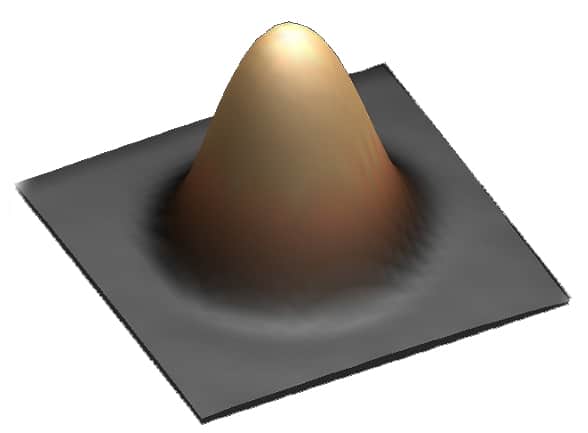IBM has announced that it has created the world’s smallest magnet, the size of only one atom, and has placed 1 bit of data on it. In contrast, today’s technology uses roughly 100,000 atoms to store 1 bit of data. This is a major development in terms of data storage density. An example IBM gives is that an iTunes library of 35 million songs will be able to be stored in a space no larger than a credit card. This breakthrough is the result of 35 years of nanotechnology history at IBM, including the invention of the Nobel prize-winning scanning tunneling microscope.

Single atom of Holmium
Increasing density (especially within the same physical footprint) has been a goal of the storage industry for some time now. Though we keep seeing HDDs climb in capacity, with PMR climbing to 8TB and helium drives as high as 12TB that are currently shipping, SSDs have really taken off with capacity as high as 100TB within a single 3.5” form factor. But this announcement by IBM would blow these other densities out of the water. The new technology could potentially yield storage density 1,000 times denser than today’s HDDs and SSDs. Not only does them mean that data centers could potentially take up much less space (1/1000th of the current space used for storage) it would mean other devices that use storage could be much smaller, like computers and mobile devices.
IBM took the smallest unit of common matter, the atom, and demonstrated that one bit of data could be read or written to by using an electrical current. They further went on to show that two magnetic atoms one nanometer apart could be written and read independently. The bit is the most basic piece of information that a computer can understand. A bit only has one of two values, either 1 or 0. Starting with this small amount of data IBM took it from there to see how small the amount of storage could be to store this data.
Instead of mangling how it works, I’ll just quote IBM: “The world’s smallest magnet, similar to a magnet on a refrigerator, also has a north and south magnetic pole, but it consists of just a single atom of the element holmium. The single holmium atom is attached to a carefully chosen surface, magnesium oxide, which makes its north and south poles hold in a stable direction even when disturbed, for example, by other magnets nearby. The two stable magnetic orientations define the “1” and “0” of the bit. A sharp metal needle of a custom microscope introduces a current that flips the magnetic north and south poles of the atom and thus changes it between “1” and “0”. This corresponds to the “write” process in a hard-disk drive. Scientists can then measure the magnetic current passing though the atom to determine whether its value is “1” or “0”. This is the “read” process. More about the atom’s magnetic properties was learned using a new sensing technique introduced in a companion paper published earlier this week in the peer-reviewed journal, Nature Nanotechnology. The quantum mechanical technique called “spin resonance” allowed the researchers to use a single iron atom as a sensor to measure the magnetic field of each holmium atom.
“The scientists at IBM Research used a scanning tunneling microscope (STM), an IBM invention that won the 1986 Nobel Prize for Physics, to build and measure isolated single-atom bits using the holmium atoms. The custom microscope operates in extreme vacuum conditions to eliminate interference by air molecules and other contamination. The microscope also uses liquid helium for cooling that allows the atoms to retain their magnetic orientations long enough to be written and read reliably.”
Assuming IBM can perfect and grow this technology at a reasonable cost, it could revolutionize the industry. Imagine a 12PB HDD in a 3.5” form factor. Some current organizations could have all of their data on one drive with one more for disaster recovery. Or this technology could put multiple TBs into a mobile device. Of course performance and power usage are other issues that could potentially hinder this advancement in all areas. But assuming it would hit the same performance as current day HDDs it would defiantly change the game for cloud storage.




 Amazon
Amazon